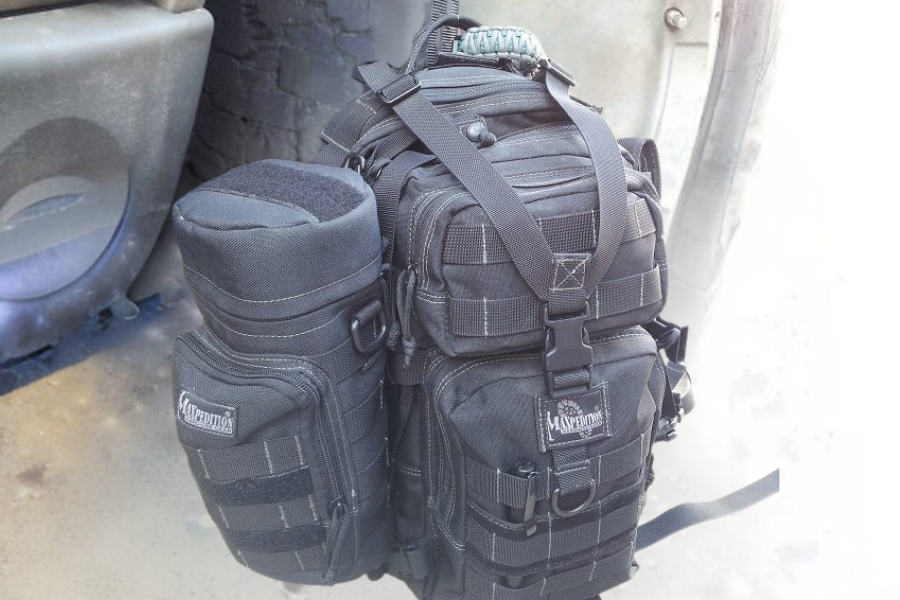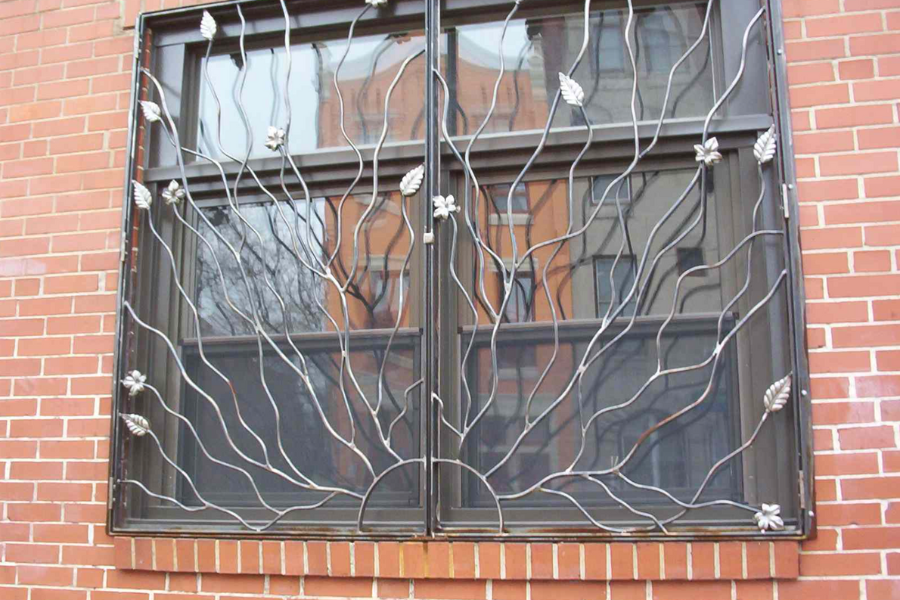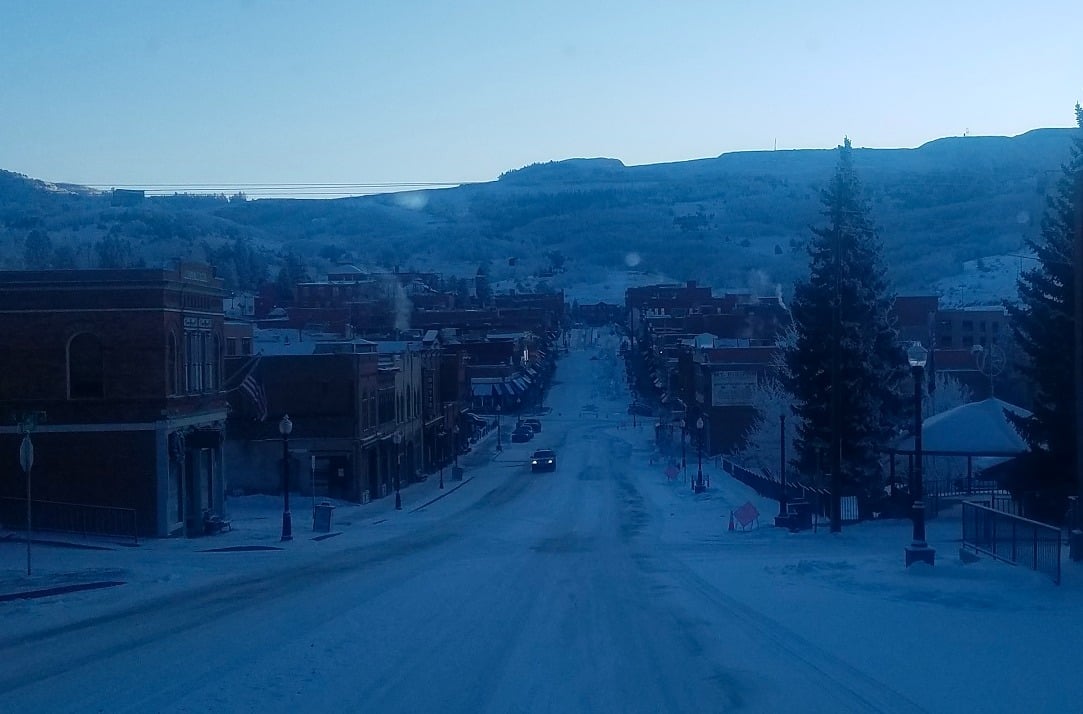1 min read
Fire Cider - Master Tonic
Fire Cider and/or Master Tonic is a concoction that you can make at home that helps combat the flu, other similar illnesses, and much, much more....

Many of you have a survival kit or bug out bag in your home but do you have a Get Home Bag?
A "get home bag" (also known as a "go bag" or "everyday carry bag") is a pre-prepared bag containing essential items that an individual may need in case of an unexpected emergency that requires them to make their way back home from their current location. This bag is different from a bug-out bag, which is a more comprehensive emergency preparedness kit meant to sustain a person for a longer period.
The contents of a get home bag may vary depending on an individual's specific needs and the potential scenarios that they may encounter, but typically include essential items such as water, food, first-aid supplies, communication tools, and navigation aids. The idea behind a get home bag is to provide an individual with the resources they need to reach safety in the event of a crisis, when other forms of transportation or support may not be available. The term is most commonly used in the context of urban or suburban areas, where people may have to travel a relatively short distance to get home but could encounter obstacles along the way.
Imagine you are at work or miles away from home and disaster strikes or some sort of major event happens where streets are blocked, the city is in panic for some reason and you have to get home to your family. Are you prepared to make the walk home?
You might think that you only work 10 miles from your home and 10 miles is not a big deal but in a crisis situation the walk may not be all that simple. Generally speaking, most people walk 2 – 3 miles per hour so 10 miles would take you more than 3 hours. During a crisis your pace would probably quicken but you also have to consider that there will be obstacles in your way, which may slow you down.
There are several practical reasons why someone might need a get home bag. Here are a few:
Natural disasters: Natural disasters such as blizzards, hurricanes, earthquakes, tornadoes, or floods can strike without warning and leave people stranded in unfamiliar places. A get home bag can help someone navigate their way back home through potentially dangerous conditions and provide necessary supplies like clothing, water, food, and first aid items.
Public transportation disruption: In case of public transportation disruption, such as a power outage or a transit strike, a get home bag can help someone make their way back home on foot or by bike. It can include items such as a map, a flashlight, comfortable shoes, and a lightweight change of clothes.
Personal safety: In case of a personal safety emergency such as a sudden attack, a get home bag can help someone escape danger and make their way back home. It may include self-defense tools, such as pepper spray or a whistle, and a means of communication, such as a cell phone or a two-way radio.
Car breakdown: A car breakdown or a traffic jam can leave someone stranded on the road, making it difficult for them to get back home. A get home bag can help them manage the situation by providing necessary supplies, such as water, food, and a phone charger, while they wait for help or find an alternate means of transportation.
If you were to put together a get home bag, what would you put in it?
If you wear a dress or suit on a day-to-day basis, pack a change of clothes that are more appropriate for walking long distances. Other than your initial change of more rugged clothing you should have an extra pair of wool socks, a warm pair of gloves, and a warm hat. You should also have a hat that blocks the sun from your face and neck, a bandana, sunscreen, lip balm, and other clothing that suits your environment/weather. Chances are if it's winter or rainy season, you already have a heavy coat or jacket. Don’t go overboard on extra clothing in your GHB, just make sure you have something warm in case you get caught out at night or in undesirable weather.
First and foremost, you should assume that with your get home bag, you will be walking. The first thing you should have is a pair of shoes or boots that are comfortable to walk in. If you always wear good shoes then skip this but if you wear high heels or dress shoes that hurt your feet by the end of the day, pack a pair of good walking shoes/boots with your bag. An extra pair of socks is a great addition to the bag too. I recommend wool socks as they help pull moisture away from your body and will keep your feet warm even when wet. If its winter and you will be walking in the snow, I highly recommend boot gaiters to keep snow out of your boots and the bottom of your pants dry.
Read the article on Clothing and Layering Basics for some tips on what clothes you should but in your get home bag.
A get home bag is slightly different from a Bug Out Bag or survival kit but not drastic. A BOB is a little bit more long-term while a GHB is short-term as it is just meant to get you home. So it should be small, light, and not too bulky so you can travel quickly. The backpack should be comfortable enough to carry for many miles. I always recommend a pack with comfortable padded straps and a waist belt.
You should try to keep your get home bag below 20 lbs, not including the clothes you will immediately change into.
I would also choose a bag that blends into your environment. In some situations, you don't want to stand out too much. Tactical-style backpacks are common these days but still may advertise you as being a prepared individual who has all the tools a person may need. If you don't want to draw attention to yourself, consider a more low-key hiking backpack or a quality school book bag.
Tactical packs tend to be earth-toned colors while hiking packs are usually brighter. Hiking packs or daypacks might be better for an urban environment because they may not draw as much attention, even though they are bright. Hide in plain sight…
With a Get Home Bag, I assume that you are within a reasonable walking distance to your home and will be traveling through urban or suburban environments but it's not uncommon for people to commute 60-plus miles to work. Unless you know the area very well, you should have a street-level map and compass. Know how to use your map and compass. If you do not know how to navigate with a topographical map and compass then there is little use in carrying a map of this type.
A small weather radio with a hand crank cell phone charger is not necessary but is not a bad idea. If your cell phone battery dies, you can use this to recharge it. Also, keep a handful of quarters so that you can use a pay phone if phone services are available.
Carry a backup battery for your cell phone and an additional charging cable. Remember to keep this battery charged.
If you are in an urban environment, I would assume that there is some sort of shelter but I would not count on it. Your get home bag should have rain gear and a tarp to use for a shelter. I recommend a ripstop tarp that is at least 8x10. To put up your shelter you are going to need rope. I recommend carrying two 25-foot lengths of paracord in your pack.
Mylar emergency blankets are cheap and lightweight so having a few of these in your pack is a good idea. These emergency blankets do rip easily though and if untrained, they may be difficult to use to construct an effective shelter.
There is always the possibility that you will face some sort of hostile aggression while traveling during an emergency situation. With that in mind, your next item should be something for self-defense. Not everyone can or wants to carry a firearm and if this is you then get yourself some pepper spray and/or a stun gun. If you do carry a firearm it should be something that fits in your pack or conceal carry, and pepper spray as backup wouldn’t be a bad idea.
I carry a pocketknife on me when I am out and about and always have a bushcraft-style knife in my kit. I can conceal both easily. They are not big knives but are discrete and agile and someone will be unhappy if I have to use it. I would only use a weapon as a last resort however and would either choose to evade people if I felt it was necessary.
Your GHB should have a solid first aid kit. By first aid kit, I do not mean something you buy ready made at a retail store. I prefer to call this a trauma kit because for me, the term "first aid kit" drums up the visual of a box with 900 band aides in it. I highly recommend you build your own trauma kit and know how to use everything in it. Our Wilderness First Responder class is a great way to learn how to use the most common medical items.
Don't skimp on your trauma kit as it is the first line of defense to save your life. You don't need a lot of bandaids, which many prefab first aid kits do. Your trauma kit should have latex gloves, CPR mask, trauma shears, ace bandage, a few band-aids, gauze, 4x4 sterile gauze pads, medical tape, needle, tweezers, lip balm, medication, cold compress pack, and tourniquet. If you have diabetes or travel with someone that has diabetes then carrying a small tube of cake frosting might be a good idea.
You aren't going to have time to stop and cook if you are in an urban environment so you should pack food that is ready to eat. Hiking meal bars that you can keep in your pack at all times are a good option as they can withstand the elements and have plenty of nutrients to last you for a while.
Food – ready to eat, (high-calorie energy bars such as Clif bars, Powerbars, PROBAR, etc... Trail mix, beefy jerky or other similar snacks that are easy to eat and don’t require cooking. I would carry at a minimum 3600 calories.
You should also have a water bottle and a water purifier. I would keep at least a pint of water in your car and an empty metal water bottle for gathering water.
I prefer metal water bottles because you can boil water in them, either to purify the water or to use as a portable heater to warm your body. Water purifiers like the Sawyer Mini are fairly inexpensive and lightweight, so there is no reason you shouldn't have one in your kit.
If you are going on a long road trip, bring at least a gallon of water.
Building a fire isn't always as easy as it looks and without the correct tools to build a fire, it is practically impossible. A few simple, lightweight items could save your life. In my pack, I carry two ferro rods and a lighter as well as a container full of about 30 cotton balls and Vaseline. Click here if you have never used cotton balls and Vaseline as fire tinder.
I also carry a Wazoo Bushcraft Necklace on me at all times.
Tools simply make survival easier. None of these are necessary but if you have the room in your pack and the strength to carry them, you should add them. Tools – Knife, Leatherman or similar multitool, handsaw, duct tape, flashlight or headlamp, extra batteries, paracord, cash money, weather radio, whistle, industrial zip ties.
Other items you may want to consider are toilet paper, soap, dental floss, toothbrush & paste, hand sanitizer and insect repellent.
And last but not least, IDENTIFICATION. Law enforcement may not let you pass through a neighborhood unless you belong there.
99% of the time your get home bag will be used because of weather situations because you got stuck in a snowstorm or something similar but someday that 1% could happen.
The most important tool of all is your brain. Be aware and keep your head on a swivel. Your first instinct may be to help people that you see injured. Before you rush in, assess the situation and determine why they need help. Don’t make things worse by getting injured yourself. If you see a bunch of people unconscious lying on the ground you need to determine why they are down. Did they walk into an area with poisonous gas and fall unconscious? Don’t walk in and become a victim too. People don’t just fall down and go to sleep for no reason. Help when you can, but remember you have family at home who are counting on you.

1 min read
Fire Cider and/or Master Tonic is a concoction that you can make at home that helps combat the flu, other similar illnesses, and much, much more....

In today’s world, many people want what you got and a few are willing to take it from you by any means necessary. With the amount of break-ins...

HERE'S WHAT YOU NEED TO KNOW BEFORE YOU HIT THE ROAD Alright folks, it's time to talk about winter vehicle preparedness and your winter car...